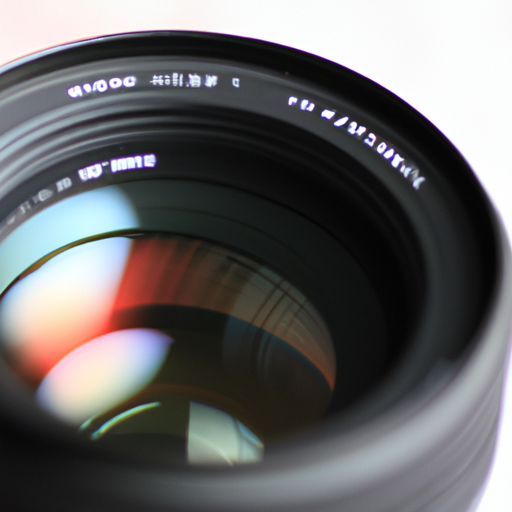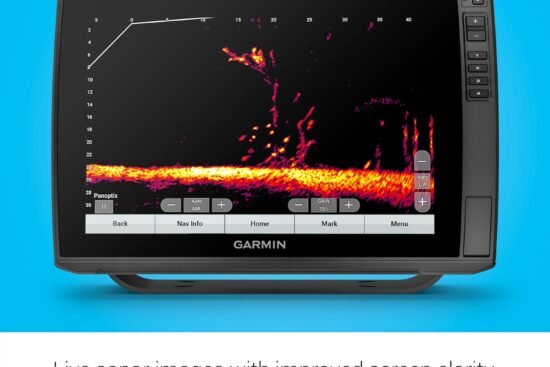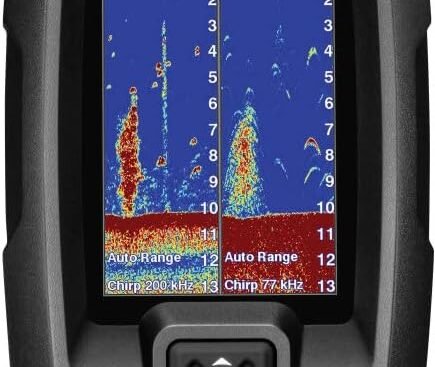
So you’re in the market for a new digital camera, but with so many options out there, it can be overwhelming to know what features are truly essential. Whether you’re a professional photographer or just a casual shooter, there are certain factors you should consider to ensure your camera meets your needs. From megapixels and sensor size to autofocus and image stabilization, this article will guide you through the essential features to look for when purchasing a new digital camera.
Image Quality
When it comes to digital cameras, image quality is one of the most important factors to consider. After all, the whole point of having a camera is to capture beautiful, high-quality images. There are several aspects of image quality to take into account.
Resolution
Resolution refers to the number of pixels in an image. The higher the resolution, the more detail and clarity your photos will have. Common resolutions for digital cameras include Full HD (1920×1080), 4K (3840×2160), and even higher resolutions for professional-grade cameras. If you plan on printing your photos or cropping them heavily, opting for a higher resolution camera would be a wise choice.
Sensor Size
The sensor size plays a crucial role in determining the image quality of a camera. Larger sensors tend to capture more light, resulting in better low-light performance and reduced noise in your photos. APS-C and full-frame sensors are commonly found in high-end cameras, while smaller sensors are often used in compact or entry-level models.
ISO Range
ISO refers to the sensitivity of the camera’s sensor to light. A wider ISO range allows you to shoot in various lighting conditions, including low-light situations, without sacrificing image quality. A camera with a higher ISO range will give you more flexibility and better performance in challenging lighting conditions.
Image Stabilization
Image stabilization helps to reduce camera shake, resulting in sharper images, especially in situations where handheld shooting is necessary or under less-than-ideal lighting conditions. Optical image stabilization (OIS) is often found in lenses, while some cameras also offer in-body image stabilization (IBIS) that stabilizes the sensor itself. Having image stabilization can greatly improve your chances of capturing sharp photos.
Lens
The lens is another vital component of a digital camera as it determines the quality and versatility of the images you capture.
Focal Length
The focal length of a lens determines its angle of view and magnification. A shorter focal length lens will provide a wider field-of-view, making it suitable for capturing landscapes or group shots. On the other hand, a longer focal length lens will have a narrower field-of-view, allowing you to zoom in and bring distant subjects closer.
Aperture
The aperture of a lens controls the amount of light that enters the camera. A wider aperture (denoted by a smaller f-number) allows more light to pass through, resulting in brighter images and better low-light performance. It also affects the depth of field, determining how much of the image is in focus. Lenses with wider apertures are particularly useful for portraits or creating a shallow depth-of-field effect.
Zoom Range
If you enjoy capturing subjects from a distance, a camera with a versatile zoom range will be a valuable asset. It allows you to adjust the focal length and magnification to match your shooting requirements, whether you’re shooting wildlife, sports, or even architectural details.
Lens Compatibility
If you plan on expanding your photography gear in the future, considering lens compatibility is important. Some camera systems have a wide range of compatible lenses from various manufacturers, offering you more options and flexibility. However, other camera systems have a limited selection of lenses, so it’s worth researching the available lens options before making a purchase.
Camera Type
Choosing the right camera type is essential as it affects the overall functionality, size, and weight of the camera.
Point-and-Shoot
Point-and-shoot cameras are compact, lightweight, and easy to use. They are great for capturing everyday moments or when you don’t want to carry around a bulky camera. They usually have fixed lenses, automatic settings, and limited manual controls compared to other camera types. While they may not offer the same level of image quality and versatility as other camera types, they are convenient and perfect for casual photographers.
Mirrorless
Mirrorless cameras offer a blend of portability, versatility, and image quality. As the name suggests, these cameras lack the mirror mechanism found in DSLR cameras, resulting in a more compact and lighter build. Mirrorless cameras often have interchangeable lenses, manual controls, and advanced features. They are suitable for both beginners and advanced photographers who want excellent image quality and the ability to switch between different lenses.
DSLR
Digital Single Lens Reflex (DSLR) cameras are known for their excellent image quality, reliability, and extensive lens options. DSLRs utilize a mirror mechanism that redirects light into an optical viewfinder, allowing you to preview the exact scene you’re about to capture. They generally have larger sensors and more advanced autofocus systems than point-and-shoot or mirrorless cameras. DSLRs provide a wide range of manual controls and are favored by professionals or enthusiasts who require top-notch image quality and extensive customization options.
User Interface
The user interface of a camera determines how easy and intuitive it is to navigate through its settings and options.
LCD Screen
The LCD screen is where you preview and review your images. A larger screen with higher resolution can offer a better viewing experience. Touchscreen functionality is also worth considering as it allows for quick and easy navigation through menus and settings.
Viewfinder
A viewfinder is an essential feature that allows you to compose your shots more accurately. Optical viewfinders, commonly found in DSLRs, provide a clear and direct view of the scene. Electronic viewfinders (EVFs) are used in mirrorless cameras and offer a live view of the scene by digitally replicating what the camera sensor captures. Both types have their advantages and it often comes down to personal preference.
Buttons and Controls
Ergonomics and the placement of buttons and controls can greatly impact the overall shooting experience. Cameras with dedicated physical dials for adjusting aperture, shutter speed, and other settings offer a more tactile and intuitive shooting experience, especially for manual shooting. Consider a camera that has easily accessible buttons and controls that fit comfortably in your hands.
Shooting Modes
Different shooting modes cater to varying shooting scenarios and skill levels.
Auto Mode
Auto mode is perfect for beginners or when you want the camera to do most of the work. In this mode, the camera will automatically adjust settings such as exposure, focus, and white balance to produce a well-exposed and balanced image. It allows you to simply point and shoot without worrying about the technical aspects. However, using auto mode limits your creative control over the final image.
Manual Mode
Manual mode gives you full control over the camera settings, allowing you to adjust aperture, shutter speed, ISO, and other parameters to achieve your desired results. It requires a good understanding of exposure and photography principles, making it suitable for more experienced photographers who want complete creative control.
Scene Modes
Scene modes are pre-programmed settings tailored for specific types of scenes or subjects. These modes optimize the camera settings to capture high-quality images in various scenarios, such as landscapes, portraits, night scenes, sports, and more. They are helpful for those who want to achieve specific effects without delving into manual settings.
Continuous Shooting
Continuous shooting refers to the camera’s ability to capture multiple frames in rapid succession. It is valuable when photographing fast-moving subjects or capturing a series of action shots.
Burst Mode
Burst mode allows the camera to capture a continuous series of frames as long as the shutter button is held down or until the buffer fills up. The speed of burst mode is measured in frames per second (fps), indicating how many images the camera can capture in one second. A higher fps rate provides better chances of capturing the perfect moment in scenarios such as sports photography or wildlife photography.
Frames Per Second
Frames per second (fps) is the measure of how many frames a camera can capture within one second. A higher fps rate allows you to capture more images within a short amount of time, increasing the likelihood of capturing fast-moving subjects or decisive moments. Consider the shooting scenarios you plan to use your camera for and choose a model with an fps rate that suits your needs.
Video Recording
If you’re interested in shooting videos, consider the camera’s video recording capabilities.
Resolution
Video resolution is measured in pixels and determines the level of detail captured in a video. Common resolutions include Full HD (1920×1080), 4K (3840×2160), and now even 8K (7680×4320) for high-end cameras. Higher resolutions provide sharper and more detailed videos, ensuring a visually pleasing viewing experience.
Frame Rate
The frame rate represents the number of frames recorded per second. For smooth motion capture, a higher frame rate is desirable. The standard frame rate for videos is 24 or 30 frames per second, but many cameras now offer options for higher frame rates, such as 60 or 120 fps, which can be used to achieve slow-motion effects.
Video Stabilization
Video stabilization is crucial for producing smooth and steady footage, especially when shooting handheld or moving subjects. Optical or electronic image stabilization compensates for camera movements, reducing the appearance of shakiness and vibrations. Look for cameras with effective stabilization systems to ensure your videos turn out stable and professional-looking.
Connectivity Options
Having connectivity options in a digital camera allows for easy transfer of images and remote control capabilities.
Wi-Fi
Wi-Fi connectivity enables you to transfer photos wirelessly to a smartphone, tablet, or computer for instant sharing on social media or cloud storage. It also allows for remote control of the camera using a companion app, making it convenient for capturing self-portraits or group photos without physically touching the camera.
Bluetooth
Bluetooth connectivity provides a seamless and energy-efficient way to connect your camera to other devices. It is commonly used for transferring images wirelessly and quickly, even when the camera is turned off or in standby mode. Bluetooth is also useful for GPS tagging, allowing you to geo-tag your photos by connecting to your smartphone’s location data.
NFC
Near Field Communication (NFC) enables quick and easy pairing between your camera and compatible devices. By simply touching or placing your camera near an NFC-enabled device, such as a smartphone or tablet, you can establish a connection for image transfer or remote control. NFC simplifies the process of pairing and enhances the overall convenience of using your camera wirelessly.
Battery Life
Battery life is an important consideration, especially if you plan on using your camera for extended periods or in situations where recharging is not readily available.
The number of shots a camera can take per battery charge varies depending on factors such as the camera type, shooting mode, LCD usage, and other power-consuming features. It is advisable to check the manufacturer’s specifications for estimated battery life or read user reviews to ensure the camera you choose can meet your shooting needs. Consider carrying an extra battery or investing in a portable charger for extended shooting sessions.
Storage Options
Digital cameras offer various storage options for storing your captured images.
Memory Card Type
Most digital cameras use memory cards to store images and videos. The most common types of memory cards include Secure Digital (SD), CompactFlash (CF), and microSD. Ensure the camera you choose is compatible with the memory card type you prefer, and consider the capacity and speed of the memory card to meet your storage and data transfer needs.
Internal Storage
Some cameras feature built-in internal storage, allowing you to store a limited number of images or videos without the need for a memory card. However, internal storage is often limited in capacity and may not be expandable, so it’s best to rely on external memory cards for more extensive storage capabilities.
In conclusion, when buying a new digital camera, the essential features to consider are image quality, lens capabilities, camera type, user interface, shooting modes, continuous shooting, video recording capabilities, connectivity options, battery life, and storage options. By carefully considering these factors and understanding your photography needs and preferences, you can choose a camera that suits your style and helps you capture stunning images and videos for years to come.




